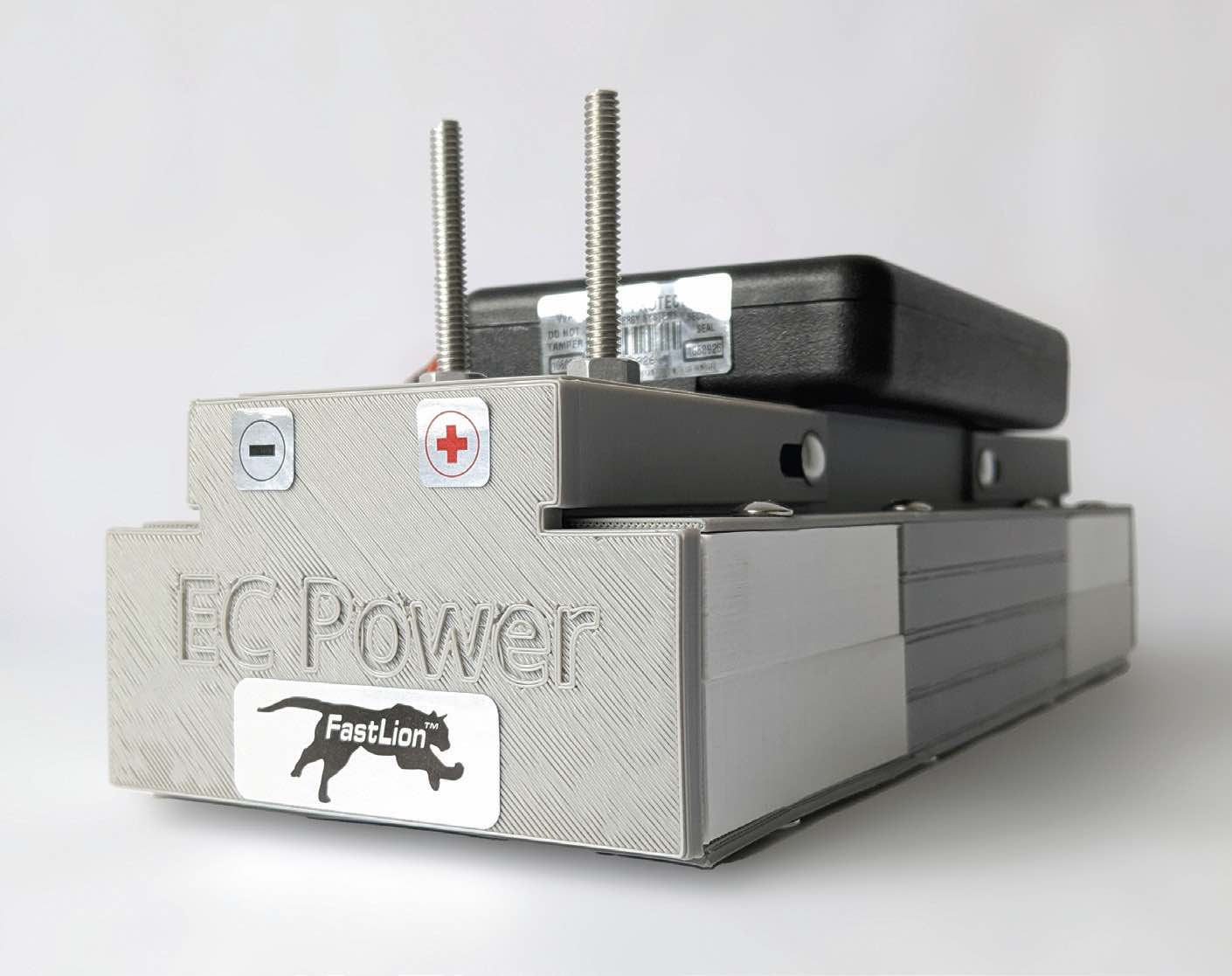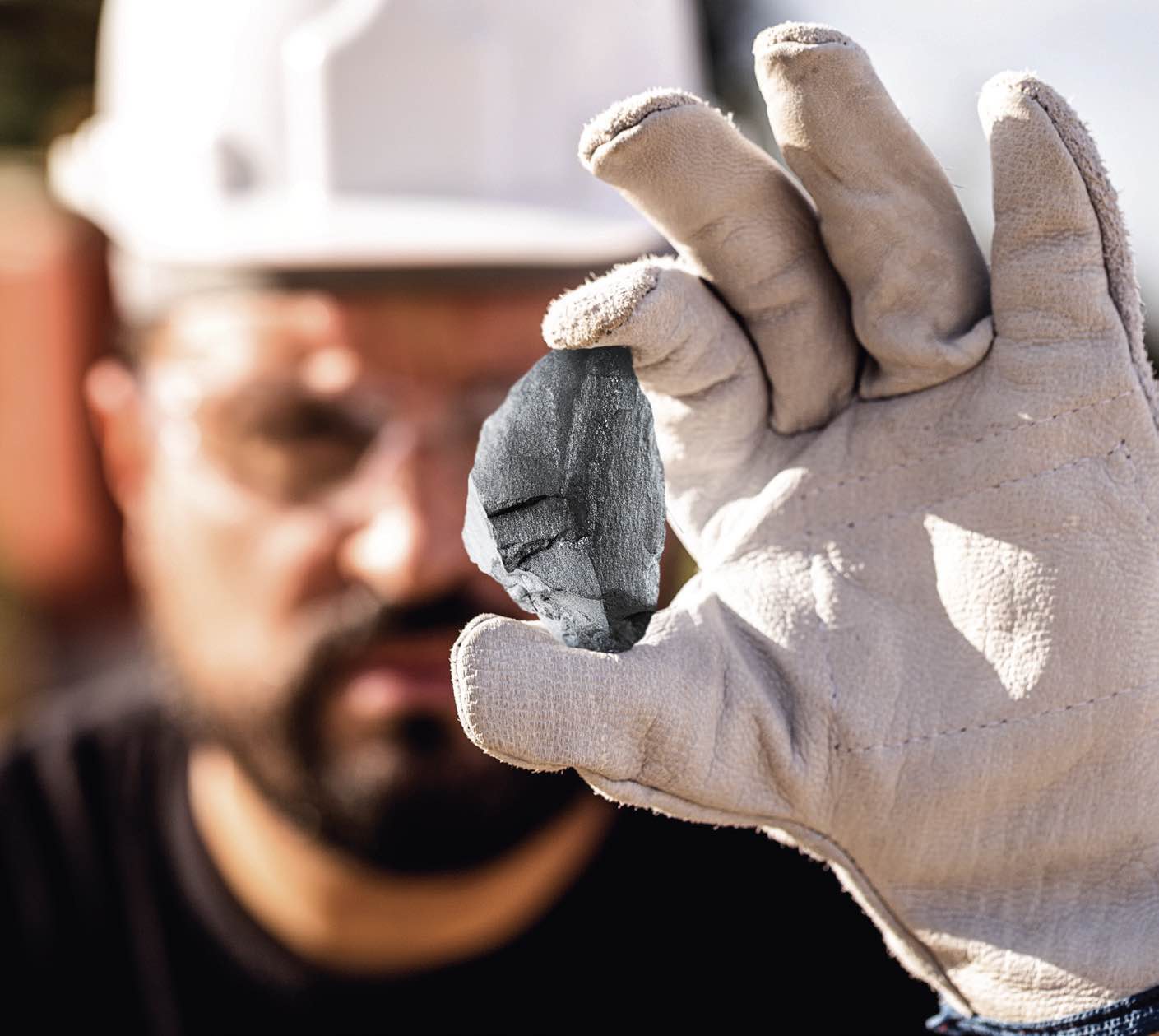HIGHLIGHTS
•
According to the U.S. Department of Energy, fast charging of a battery means that 150 watt-hours per kilogram of energy must be acquired within 15 minutes and be used for at least 500 cycles in a row.
•
Faster charging of a lithium-ion battery for 10 minutes has been achieved through a technique known as asymmetric temperature modulation (ATM).
•
The key to the process is self-regulation of the battery’s temperature by adding an ultrathin nickel foil to the battery structure.
Challenges remain to commercializing battery electric vehicles that exhibit comparable cost performance to internal combustion engine powered vehicles. While the benefits of driving battery electric vehicles are apparent in significantly reducing emissions, there are other factors, not related to performance, that need to be considered.
A past TLT article
1 highlights the issue of improving the overall sustainability of electric vehicles through recycling the components present in lithium-ion batteries. In particular, the cathode contains significant percentages of nickel, manganese and cobalt, which are all sourced through mining, an energy intensive process. Recycling of these metals is a strategy for minimizing the need for mining. Recovery rates for nickel, manganese and cobalt at over 90% are achieved through a closed-loop process that combines the benefits of hydrometallurgical and direct recycling. A battery prepared with these recycled metals exhibits superior results in testing to pristine cathode materials.
Another issue, integral to consumer acceptance, is the time needed to recharge electric vehicle batteries. Consumers desire a process for recharging that is comparable in timing to pumping fuel for an internal combustion powered vehicle.
Brian McCarthy, chief technology officer for EC Power Group Inc. located in State College, Pa., says, “Three metrics need to be considered in charging electric vehicle batteries. The first parameter is determining how many minutes are required to charge the battery. A second one is to ascertain how much energy is added to the battery in a specific number of minutes. Then finally, how many times a battery can be charged in a row without its performance being reduced needs to be evaluated.”
With fast charging of batteries being the goal, the question remains about how to define what fast charging means. McCarthy says, “The U.S. Department of Energy (DOE) states that fast charging means a battery must acquire 150 watt-hours per kilogram of energy within 15 minutes and be able to do this for at least 500 cycles in a row. Such a battery should then be able to power a vehicle for at least 320 kilometers without charging.”
Increasing the amount of energy and reducing the charging time places greater stress on the lithium-ion battery. McCarthy explains, “Lithium-ion batteries can react violently when placed under stressful conditions such as too low of a temperature or too high a rate of charging. The reason is that lithium ions can get stuck inside the graphite anode of a typical battery producing plated lithium. Such a process can lead to dendrite formation that may force a short-circuit resulting in a fire.”
In an effort to exceed the charging guidelines from the DOE, a new approach has now been developed that results in faster charging of lithium-ion batteries without any of the negative side effects discussed.
Asymmetric temperature modulation
McCarthy and his colleagues including Dr. Chao-Yang Wang, the William E. Diefenderfer professor of mechanical engineering at Penn State University in State College, Pa., have been able to charge a state-of-the-art lithium-ion battery in 10 minutes. The battery used contained a NMC 811 cathode, which is prepared with oxides of lithium, nickel, manganese and cobalt and a graphite anode.
In 10 minutes, a state of charge of 70% was achieved, and the battery was able to be charged at this rate for 2,000 cycles without a drop-off in performance. The researchers determined that this is equivalent to a battery range of 800,000 kilometers.
This fast charging was accomplished through a technique known as asymmetric temperature modulation (ATM). McCarthy says, “For rapid charging to be successful, the temperature of the battery must be in the 60-65 C range. But the concern is that leaving the battery at this high of a temperature for a long period of time will accelerate aging, which reduces performance. Current options for heating the battery involve the use of a liquid cooling system, which would need to be heated for 30-45 minutes. Such a process is not efficient and puts extra stress on the battery. As an alternative, adding an ultrathin nickel foil to the battery structure
(see Figure 1) leads to fast self-regulation of the battery’s temperature. This additional component enables the battery to be rapidly heated to between 60-65 C for charging and then rapidly cooled to 40 C to minimize aging. Battery operation is then conducted at ambient temperature, which is desired to maximize operating life.”
 Figure 1. A lithium-ion battery was able to fast charge in 10 minutes and showed good durability over 2,000 cycles without a drop-off in performance. Figure courtesy of EC Power Group Inc.
Figure 1. A lithium-ion battery was able to fast charge in 10 minutes and showed good durability over 2,000 cycles without a drop-off in performance. Figure courtesy of EC Power Group Inc.
No lithium plating was found using ATM, but McCarthy indicated that further modification of the lithium-ion battery was needed to ensure fast charging could be done without compromising battery performance and safety. He says, “We found that an electrolyte with not just the standard lithium hexafluorophosphate, but also lithium bis(fluorosulfonyl) imide, facilitated faster charging. This dual-salt electrolyte worked synergistically to ensure that fast charging could occur at 60-65 C over a short period of time.”
 Lithium-ion batteries contain cathodes with significant percentages of nickel, manganese and cobalt.
Lithium-ion batteries contain cathodes with significant percentages of nickel, manganese and cobalt.
One other additional improvement is the use of a porous graphite anode.
McCarthy indicates that even faster charging of lithium-ion batteries is feasible. He says, “We are evaluating the possibility of charging lithium-ion batteries at an even higher temperature, 75-80 C, and aiming to have this completed in five minutes. To meet this challenge, a new electrolyte engineering method will be needed.”
This work demonstrates that temperature regulation can be done from inside of the battery. Wang says, “An important benefit is that commercial electric vehicle batteries can now be downsized, which should improve consumer affordability and acceptance.”
Additional information can be found in a recent article
2 or by contacting McCarthy at
bmccarthy@ecpowergroup.com.
1.
Canter, N. (2022), “Performance of recycled cathode materials in lithium-ion batteries,” TLT,
78 (2), pp. 16-17. Available
here.
2.
Wang, C., Liu, T., Yang, X., Ge, S., Stanley, N., Rountree, E., Leng, Y. and McCarthy, B. (2022), “Fast charging of energy-dense lithium-ion batteries,”
Nature, 611 (7936) pp. 485-490.